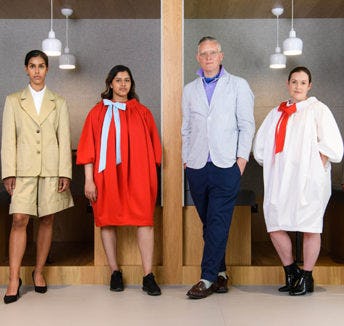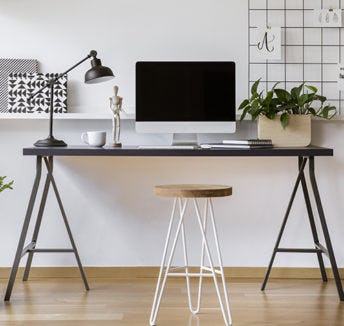
As many countries begin to lift Covid-19 restrictions, company HQs across the world will soon be open again. While some of us will no doubt breathe a sigh of relief that we can spend time alongside our colleagues again, the majority are also keen to keep hold of the flexibility that employers offered during the pandemic.
Many firms have already made moves to permanently adopt a hub-and-spoke model of working. Businesses as diverse as Google and Standard Chartered bank have committed to hybrid approaches, allowing staff to spend some time at home, some at the office (‘hub’) and some at local satellite offices (‘spokes’). These are often coworking or flexspaces that are close to home but offer all the advantages of a distraction-free, professional environment.
While this shift in working culture will enhance many people’s lives, it’s not the only win to come out of a year spent working from home.
Here, we highlight six other advances we’re determined to hang onto, post-pandemic.
Quicker catch-ups, cleaner collaboration
‘Watercooler moments’ were much mourned as the shutters came down on office buildings. But did they really disappear?
Communications platforms such as Slack, Microsoft Teams and Google Instant Messenger have allowed rapid, quick-fire conversation to continue during the pandemic. What’s more, the ability to share files, send hyperlinks and chat with multiple colleagues simultaneously has arguably made these conversations more efficient.
Employees’ ability to grab a teammate for some quick collaboration has also been enhanced through the use of shareable documents. Businesses that previously discouraged the use of Google Docs have discovered its advantages thanks to Covid-19. The existence of a single, secure file that can be edited, commented on and accessed by multiple members of a team removes the need for confusing multiple versions – not to mention hard copies. Moreover, it mitigates the risk of data loss.
More meaningful meetings
Covid-19 has led to significant change in the meetings culture at some companies, particularly those that were prone to calling frequent, large gatherings.
Unable to get scores of people together in person, they’ve had to consider other, more efficient ways of communicating. Intranets and software such as Microsoft Teams have proved popular for making announcements and distributing information, while Slack and other messenger platforms offer the opportunity to iron out issues that might previously have demanded a ‘quick’ 30-minute meeting.
Meanwhile, the transfer of meetings to Zoom and Teams has helped to expose when meetings include attendees who don’t really need to be there, allowing them to tune out or drop off calls altogether.
The viability of virtual meetings has also been established beyond doubt during the pandemic. Where employers might have insisted it wasn’t possible to make big decisions, review budgets or hire staff while working remotely, in 2020 they proved it could be done – even if, post-pandemic, it will be preferable to do these things at the corporate hub.
Increased empathy
During the pandemic, managers have been more mindful than ever of the need to regularly check in on their teams, particularly during strict lockdowns.
As workers struggled to manage their jobs alongside home schooling, Zoom calls were used for pastoral care and virtual ‘pub’ quizzes as well as project management.
In an era of global disruption, it was also easier than ever for people to admit when they were struggling. It’s hoped that this openness between employees and business leaders – as well as the empathy it often inspired – will persist long after the pandemic is behind us.
More efficient project management
Whiteboards covered in Post-it notes are all very well when your team can walk past them, but they’re of little use when everyone works remotely.
Covid-19 sent project management online in organisations that had previously preferred analogue methods, inspiring them to invest in programmes such as Trello, Workfront and Asana.
In a 2020 survey, software reviews provider Capterra found that 43% of firms had adopted a new tool since the start of the pandemic, while 26% said they intended to.
Digitising project management has democratised it, allowing employees equal access to information that’s updated in real time, no matter where they are. Even as ‘work from home’ directives disappear, it seems likely the whiteboards of the future will have notes projected, rather than Blu-Tacked, on to them.
Enhanced independence
The risk that working remotely might lead to loneliness was a key concern during the pandemic. But the flip side of flying solo is enhanced independence, and that’s something countless workers have welcomed over the past year.
The ability to set your own agenda and work flexibly has, for many of us, led to tangible improvements in mental health and wellbeing.
At the same time, the challenge of working from home around family, housemates and pets has led some of us to experiment with more strategic approaches to time management. The pomodoro technique is perennially popular, and apps such as Focus Keeper make it easier than ever to adopt. Elsewhere, distraction blockers such as Freedom and Cold Turkey will keep you off Twitter when you need to focus, and solutions such as Remember The Milk will keep your to-do list on track.
As lockdowns ease, making use of flexible workspaces will be another key way for many workers to stay close to home but switch off from domestic distractions.
Readiness to change
The adoption of hybrid or hub-and-spoke working is only one way some firms are reinventing themselves in the wake of Covid-19. According to Capterra, 77% of companies had to adapt their offerings so they could be delivered virtually.
MCI Group, an independent events agency, pivoted to producing online conferences and virtual experiences when its ‘live’ business was effectively wiped out in 2020. It delivered almost ten times more digital events than it did in 2019.
In a working world that was slowly evolving, Covid-19 has been the catalyst for sweeping changes, big and small. For many of us, things won’t go back to the way they were before. But, then, why would we want them to?
Enjoy this? You might also like these other Spaces magazine stories:
Share this article
 Read now What to wear for hybrid working, post-pandemic
Read now What to wear for hybrid working, post-pandemic
 Read now Desk-scaping: how to curate your workspace for enhanced productivity
Read now Desk-scaping: how to curate your workspace for enhanced productivity